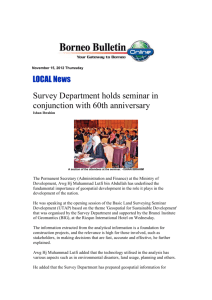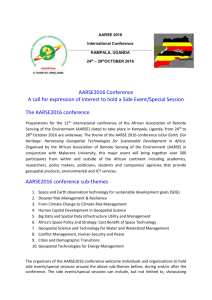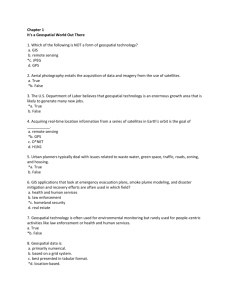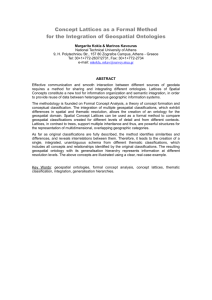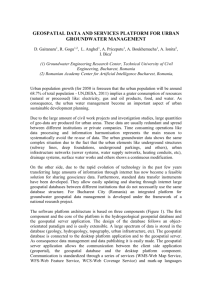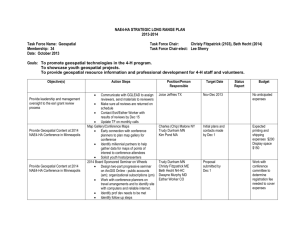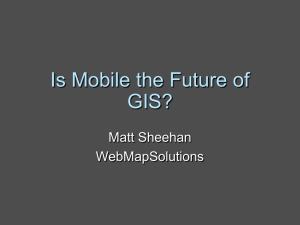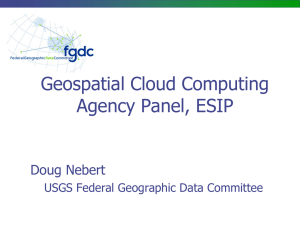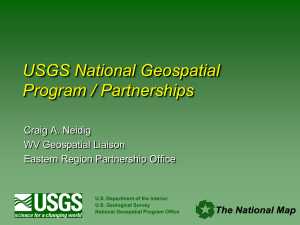slides - Computer Science - Colorado State University
advertisement
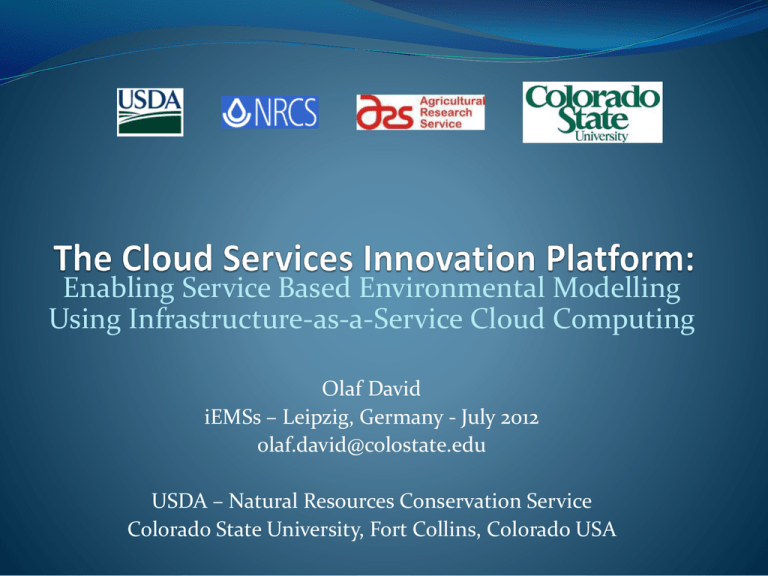
Enabling Service Based Environmental Modelling Using Infrastructure-as-a-Service Cloud Computing Olaf David iEMSs – Leipzig, Germany - July 2012 olaf.david@colostate.edu USDA – Natural Resources Conservation Service Colorado State University, Fort Collins, Colorado USA USDA-NRCS Science Delivery USDA-NRCS Conservationists County level field offices Consult directly with farmers Models Many agency environmental models Legacy desktop applications Annual updates Slow, restricted science delivery 2 3 Cloud Services Innovation Platform Model services architecture Support science delivery Desktop models web services IaaS cloud deployment Scalable compute capacity: For peak loads Year end reporting For compute intensive models Watershed models Object Modeling System 3.0 Environmental Modeling Framework Component based modeling Java annotations reduce model code coupling Inversion of control design pattern Component oriented modeling New model development Java/Groovy Legacy model integration FORTRAN C/C++ 5 RUSLE2 Model “Revised Universal Soil Loss Equation” Combines empirical and process-based science Prediction of rill and interrill soil erosion resulting from rainfall and runoff USDA-NRCS agency standard model Used by 3,000+ field offices Helps inventory erosion rates Sediment delivery estimation Conservation planning tool 6 Wind Erosion Prediction System (WEPS) Soil loss estimation based on weather and field conditions Models environmental concerns Creep/saltation, suspension, particulate matter USDA-NRCS agency standard model Process-based daily time step → 150 years Used by 3,000+ field offices Erosion control simulation Conservation planning tool 7 Cloud Application Deployment Service Requests Load Balancer Application Servers Load Balancer cache/logging noSQL datastores rDBMS / spatial DB 8 Eucalyptus 2.0 Private Clouds • Two eucalyptus clouds • ERAMSCLOUD (9) Sun X6270 blade servers • Dual quad core CPUs, 24 GB ram • OMSCLOUD • Various commodity hardware • • Eucalytpus 2.0.3 • Amazon EC2 API support • Managed mode network w/ private VLANs, Elastic IPs • Dual boot for hypervisor switching • Ubuntu (KVM), CentOS (XEN) 9 CSIP Model Services • Multi-tier client/server application • RESTful webservice, JAX-RS/Java w/ JSON App Server Geospatial rDBMS Apache Tomcat 30+ million shapes OMS3 POSTGRESQL 1000k+ files, 5+GB nginx RUSLE2 WEPS File Server Logger & shared cache memcached POSTGIS 10 Performance Gains through Cloud Scaling Increasing Model VMs and worker threads (figure 9) 11 CSIP Geospatial Dataservices Soils geospatial database mirror Data provisioning for model runs Full US dataset, ~300GB, 30 million polygons Split dataset by chunks (sharding) Longitudinal divisions Enables scaling by region Supports <10 ms query response Uses “VM local” ephemeral storage Faster than Elastic Block Storage (EBS) 12 Geospatial query performance Soils geospatial data for state of TN 4.6GB, 1,700,000 polygons Tested 1,000+ geospatial queries: XEN VM = 10.68 ms average RT Physical machine = 3.823 ms average RT Virtualization Overhead: = 179% !!! 13 Geospatial query performance - 2 Soils geospatial data for entire U.S. 300 GB, 30,000,000 polygons Tested 3,000+ geospatial queries 8 XEN VMs (hosted on 3 machines) = 17.13 ms avg RT 1 Physical machine = 16.73 ms avg RT Virtual Overhead = ~2% !!! IaaS cloud scalability eliminates virtualization overhead ! 14 15 Key Results RUSLE2 deployment scaling 1,000 model runs in ~36 seconds across 8 nodes Geospatial data services support 300 GB spatial data hosted across 8 VMs (3 PMs) Virtualiztion overhead reduced from 178% to 2% Android application support 16 Future Work HTML 5.0 mobile app Additional model services WEPS (Wind Erosion Prediction System) STIR (Soil Tillage Intensity Rating) SCI (Soil Conditioning Index) Watershed model(s) Use geospatial subbasin(s) Improvement over statistical averaging approaches Distribute subbasin calculations to separate VMs 17 18

